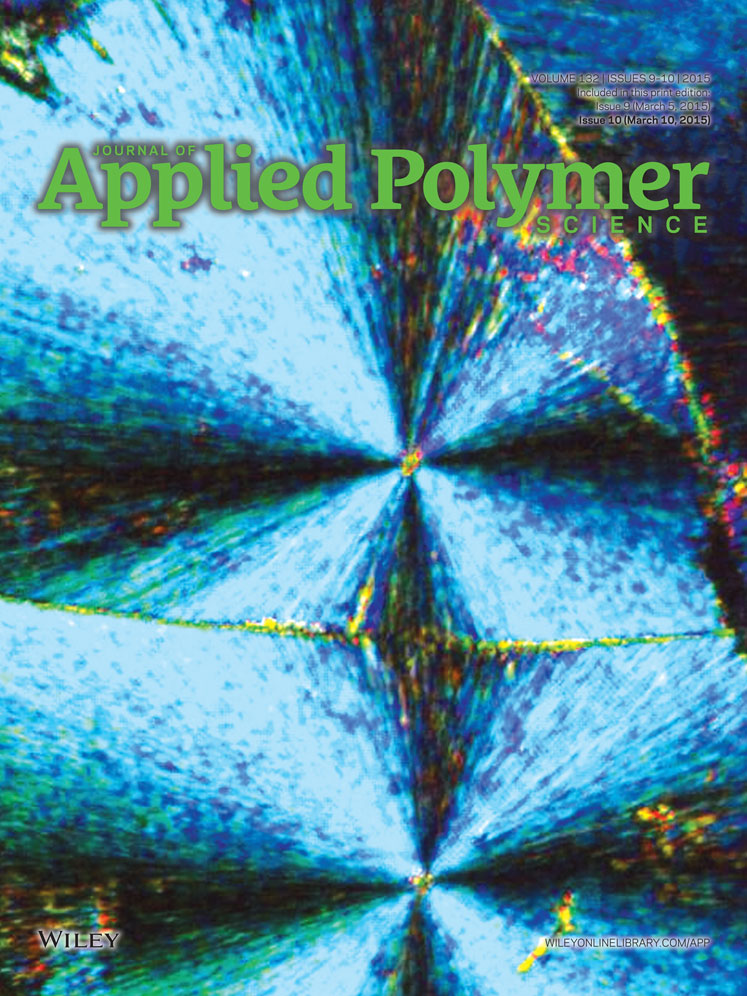Thermogravimetric and Fourier-transform infrared analyses on the cure behavior of polycardanol containing epoxy groups cured by electron beam
ABSTRACT
In this study, the curing behavior of polycardanol containing epoxy groups (diepoxidized polycardanol) was exploited in terms of thermal stability and the cure reaction conversion by means of thermogravimetric analysis and Fourier-transform infrared spectroscopy, respectively. The effect of photo-initiator type and concentration and electron beam absorption dose in the presence of cationic photo-initiators (triarylsulfonium hexafluorophosphate (P-type) and triarylsulfonium hexafluoroantimanate (Sb-type) on the cure behavior of diepoxidized cardanol (DEC) resin was investigated. The thermal stability of DEC with Sb-type photo-initiator was higher than that with P-type one, being increased with increasing the concentration and electron beam absorption dose. The conversion of cure reaction was gradually increased with increasing the dose, showing the maximum at 800 kGy. The results revealed that Sb-type photo-initiator, the concentration of 2 or 3 wt %, and electron beam absorption dose of about 800 kGy may be preferable for initiating epoxy ring opening in the DEC molecules as well as for efficiently curing the DEC resin by electron beam irradiation. © 2014 Wiley Periodicals, Inc. J. Appl. Polym. Sci. 2015, 132, 41599.




